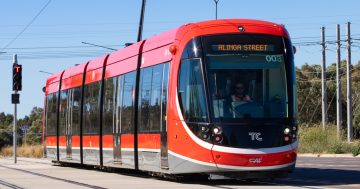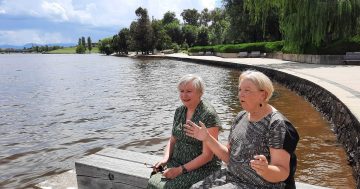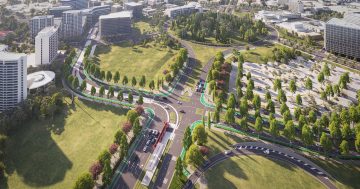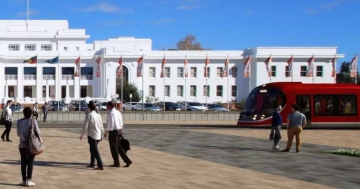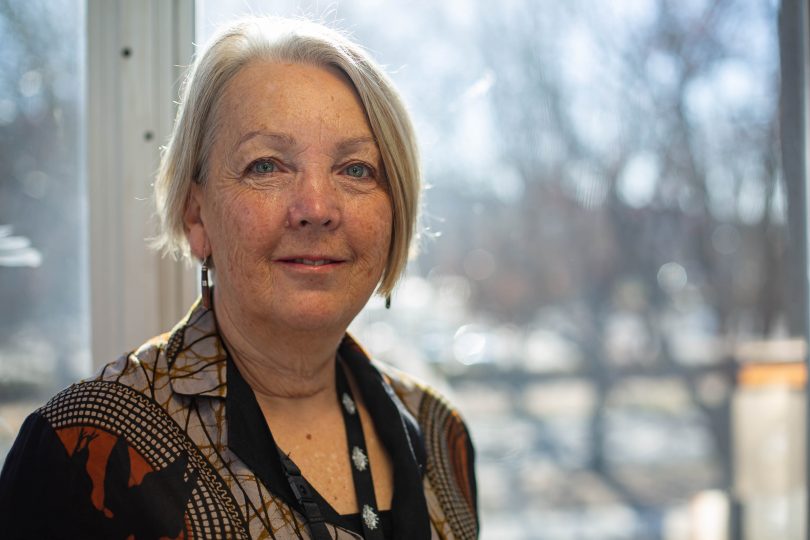
NCA chief Sally Barnes says the agency must protect Canberra’s values and landscape amidst rapid change. Photo: George Tsotsos.
National Capital Authority head Sally Barnes has hit back at claims that the agency should be abolished, saying that she wishes “I had a dollar for everyone who has said thank God for the NCA, and that includes developers who tell us we saved them from themselves”.
As another round of argument over the role of the NCA in Canberra development flares up, its chief executive is adamant that we need to be “a sophisticated city in a bush landscape, not a tinpot town”.
If you ask Canberrans about their priorities for the city, she says, it’s “landscape, landscape, landscape and landscape”.
Barnes arrived in Canberra in 2014 with a passion for open spaces and a childhood legacy of being “dragged around Pettit and Sevitt villages” by her design-conscious parents.
“This was the best of both worlds, a sophisticated regional city,” she says. “I remember thinking to myself “Hmmm…this is really not how I thought it would be.”
She took charge of the NCA at a time when Canberra’s growing pains are evident, as are some tensions between the agency and the ACT government particularly as the Northbourne corridor changes rapidly and light rail expands across the Lake.
But she says that nostalgia about the old NCDC days means it’s easy to forget they undertook little to no public consultation while commissioning and constructing the city’s public infrastructure during the boom years.
Today, it has to be a very different picture because the NCA must work with both the ACT government and private owners on sites that often have sky-high real estate values.
“Those owners have rights too, so we work on instilling values about good design and heritage. Our role is to look after the Commonwealth’s interests in Canberra. That overlaps with the people of Canberra and the ACT government, in that we all want a capital we can be proud of that reflects the nation’s democratic values,” Barnes says.
“We get that the government wants a dynamic city and we don’t want to keep spreading out. The NCA is not anti-change. But we start from a different place by saying let’s understand the heritage first. Then we ask what a good design would look like, and how it can be built on that specific site.”
But the problem is that while the NCA can construct a robust framework for design standards and must act to protect the Commonwealth’s interests, they’re not able to approve developments.
That role lies with the ACT government, and if the Territory gives that approval for a private development, the only remaining avenue is an ACAT challenge from the community.
Barnes characterises the relationship with the government as collaborative but says the NCA must be a credible regulator, their legal role under the National Capital Plan. “We need to be quite clear about what we do and why, and what our standards are for development proposals. I am conscious that we are also funded from the public purse, so we have to be accountable in front of Senate Estimates twice a year for what we spend and how we spend it”.
She does concede, however, that the NCA probably needs to sharpen up its messaging to the general public. “We need to keep working on how we explain ourselves. That’s not unusual in a highly technical organisation”.
The next priority for the agency is a thorough examination of the tree canopy in the urban forest, acknowledging that some species are coming to the end of their lives while others, like the hebes on ANZAC parade, are increasingly affected by climate change.
“We need to plan the next phase and not let the situation drift,” she says, offering the example of the National Library poplars on the lake shore, which are nearing the end of their natural lifespan and are also now a listed noxious weed in the ACT.
“Do you plant like for like? What can we replace them with that matches their form and function in the landscape?”
Overall, Barnes says she is an optimist about the city’s fast-paced development.”It’s a time of change but I am working for everyone who wants a national capital that’s more than just a town.
“We’re doing a job for all Australians”.













